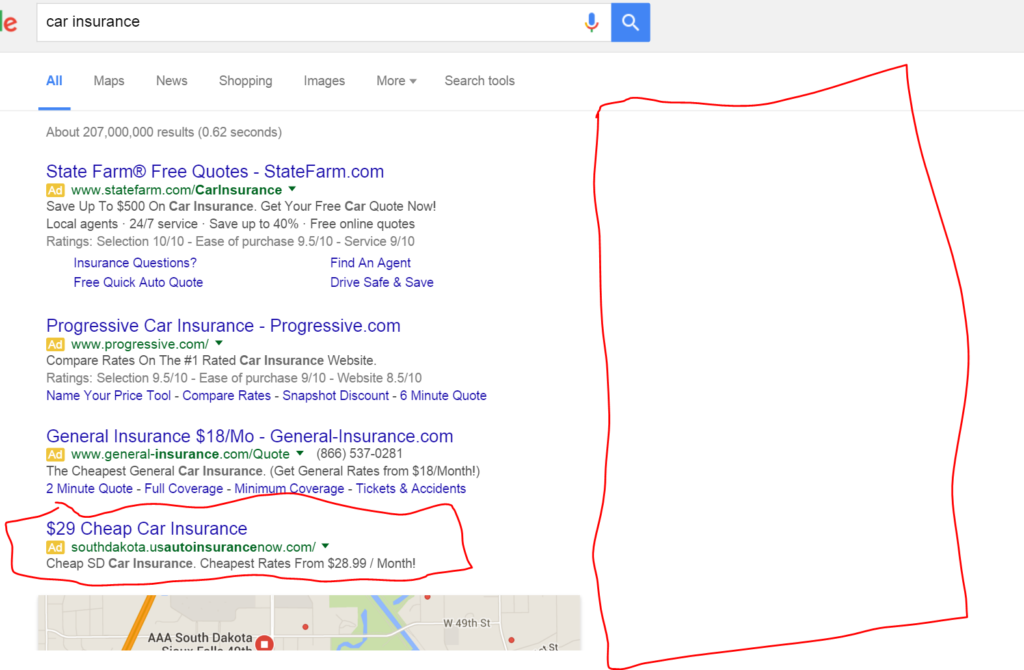We often talk about the importance of testing, knowing that minor changes can have major impact on key metrics. Google does testing better than almost anyone. And for the past few months, they have been testing changes to ad placement on the search results pages.
We are used to seeing search results where there are three paid ads at the top – above the organic results – approximately five ads along the right side, and three more ads at the bottom.
The new format, which officially rolled out last week, adds a fourth ad to the top and removes all ads from the right hand side.

The updated search results page no longer contains ads on the right hand side.
While not every search query will see the fourth ad at the top of search results, Google has indicated that this format will be used more often for searches where an “intent to purchase” is recognized.
The intent to purchase follows through to the exceptions to the right side ad as well. As of right now, Google will show ads in the Knowledge Graph and some Product Listing Ads.

Ads in the Knowledge Graph area have been seen in products like books and movies.
What does that mean for your ads?
There has been a lot of speculation as to what this will mean for advertisers. With fewer prime spots, will costs skyrocket or with an additional prime space, will qualified clicks increase? As of right now, it is too soon to tell.
However, there are some best practices that should be implemented during this time.
- Monitor campaigns and watch for changes and patterns. Keep a close eye on top performing keywords, especially if there is an assumed “intent to purchase.”
- Make sure that you have ad extensions in place. Ad extensions only appear in the top spots so having them in place will help your ad have a better chance of showing in one of those positions.
- Your ad and landing page relevance are going to grow in importance. Make sure that your ads match search intent and your landing page is applicable to the topic.
Google will continue to test and make changes. It is not a “set it and forget it” platform. The key to success with current and future changes will be to keep monitoring, optimizing and adapting.